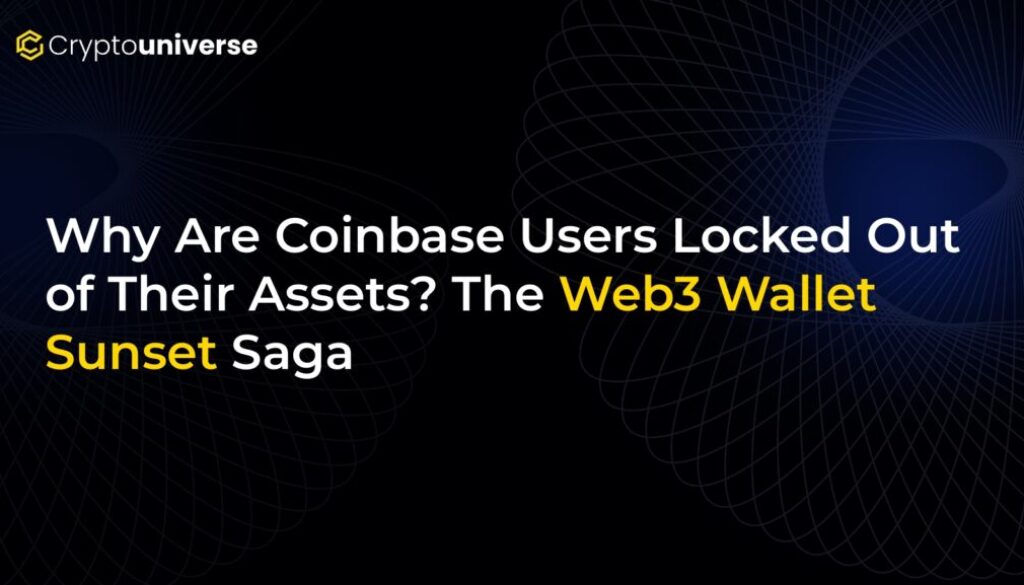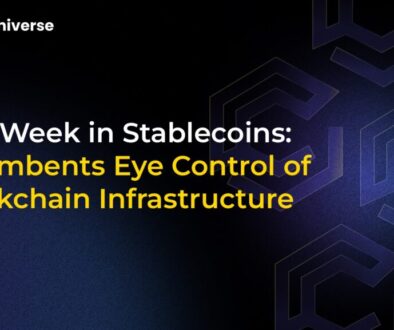Why Are Coinbase Users Locked Out of Their Assets? The Web3 Wallet Sunset Saga

Why Are Coinbase Users Locked Out of Their Assets? The Saga
When Coinbase announced it was discontinuing its in-app Web3 Wallet, it seemed like a routine product consolidation. The plan was to guide users toward its more robust, standalone Coinbase Wallet. However, what followed the announcement has been far from routine, leaving a trail of confused users, inaccessible funds, and a stark reminder about the true meaning of ownership in the crypto world.
Users from Reddit to other online forums have voiced their frustration, reporting that their digital assets—from NFTs to various tokens—have become invisible and immobile within the Coinbase app. This isn’t just a simple glitch; it’s a complex situation rooted in the very design of the wallet being shut down.
The Crucial Difference: Shared Custody vs. Self-Custody
To understand the problem, we need to look at how the Coinbase Web3 Wallet worked. Unlike a true self-custody wallet where you and you alone control the private keys (often via a 12 or 24-word seed phrase), the Web3 Wallet used a different model.
Coinbase describes it as a wallet where “Coinbase holds half of your private key, while the other half is stored on your device.” This is a form of Multi-Party Computation (MPC), designed for convenience. It allows users to interact with dApps without the full responsibility of safeguarding a seed phrase. But this convenience came at a cost: users never had full control.
This shared ownership model is the core reason why users can’t simply take their seed phrase and import their wallet into another application like MetaMask or the standalone Coinbase Wallet. When the service that holds the other half of your key changes the rules, you’re at its mercy.
The Migration Meltdown: Broken Tools and Vanishing Assets
Despite Coinbase sending multiple emails and in-app notifications about the wallet’s deprecation, the migration process itself proved to be a major point of failure. Users reported a number of critical issues:
- Broken Migration Tools: Many users claimed the tools provided to move their assets simply didn’t work, leading them in circles.
- Unresponsive Support: When seeking help, users often received generic, unhelpful responses that pointed them back to the same broken FAQ pages and instructions.
- Disappearing Balances: After the initial July 7 deadline passed, users found that their assets were no longer visible in the Coinbase app interface, creating the terrifying impression that they were gone forever.
On forums like Reddit, users described a perpetual cycle of useless migration warnings, broken instructions, and support channels that offered no real solutions, leaving them feeling helpless and ignored.
It’s Not Just About “Unsupported” Chains
Initially, one might assume the problems were limited to assets on chains not officially supported by the wallet, like the Binance Smart Chain (BSC) or Base. While users did hold assets on these networks, the issue runs much deeper.
Numerous reports confirm that assets on fully supported networks like Ethereum and Polygon also became inaccessible. NFTs, including high-value Banksy-related pieces, and tokens on Avalanche are now visible on-chain explorers but are effectively frozen—they cannot be moved or managed through the Coinbase interface.
The Expert’s Plight: A Case Study in Flawed Design
This wasn’t just a problem for crypto newcomers. Joey Dunne, a well-known figure in the crypto community also known as “LeDrop WithCheese,” found himself caught in the same trap. As a deeply experienced user, Dunne is proficient in managing wallets, interacting with dApps, and securing assets. His inability to retrieve his funds proves that this was not a simple case of user error.
Dunne meticulously documented his frozen assets, providing on-chain evidence that they still exist but are inaccessible. His case highlights a fundamental flaw in the shared custody model: when the provider alters the service, even the most technically savvy users can be left stranded.
Coinbase’s Response: A Band-Aid on a Bullet Wound
In response to the outcry, a Coinbase spokesperson clarified their position. They stated that users who held assets on unsupported chains and contacted support before the deadline were reimbursed in-kind with stablecoins.
This distinction is critical. Assets were not recovered; they were replaced. For someone holding a specific, non-fungible NFT or a token they believed would appreciate in value, a stablecoin reimbursement is a poor substitute. It’s a financial settlement for a loss of property, not a restoration of it.
What’s Happening Now?
Coinbase has since removed the hard July 7 deadline from its help articles. However, users who open the Web3 Wallet are still greeted with a persistent pop-up message urging them to move their assets before support is terminated entirely. For those whose assets are already invisible and stuck, this warning only adds to the frustration.
The Ultimate Lesson: Not Your Keys, Not Your Coins
The saga of the Coinbase Web3 Wallet sunset serves as a powerful, modern-day parable for the entire crypto ecosystem. As centralized platforms strive to onboard new users with seamless, convenient experiences, the lines between true ownership and custodial convenience can become dangerously blurred.
This incident is more than just a product shutdown. It’s a clear and potent warning: if you don’t have sole, undisputed control over your private keys, your ownership of your digital assets is conditional. Convenience is tempting, but in the world of crypto, control is everything.


